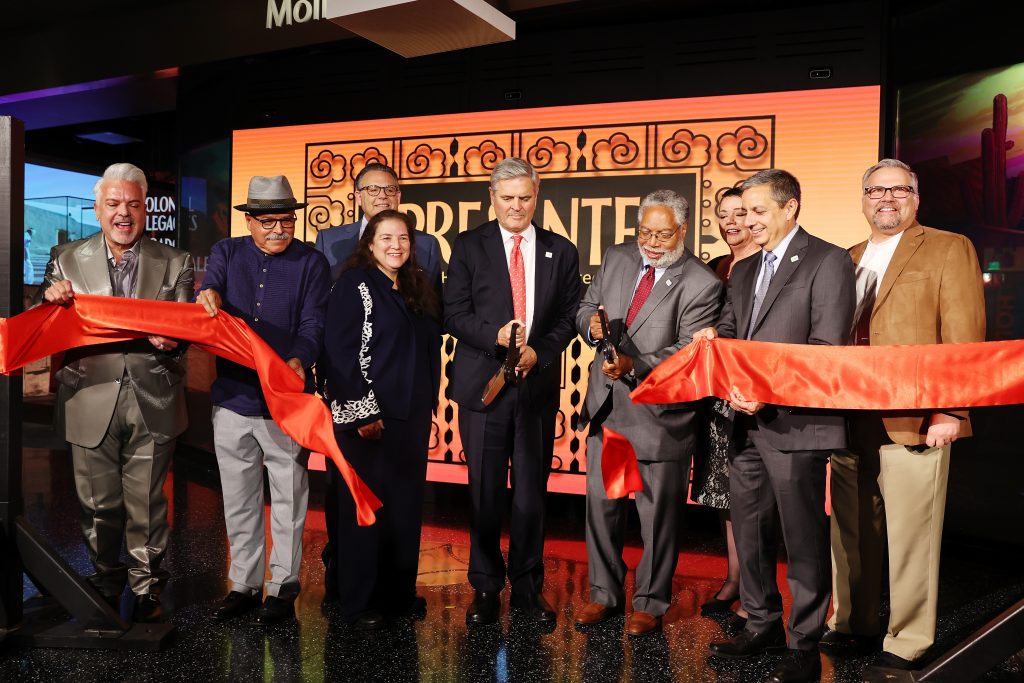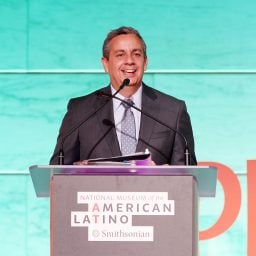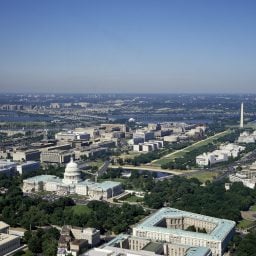When Congress voted in 2020 to approve the creation of a new Smithsonian museum dedicated to Latino history, it was a rare moment of bipartisan cooperation, with politicians on both sides of the aisle coming together to honor Latino contributions to U.S. history and culture.
But three years later, the National Museum of the American Latino has become a flashpoint for partisan ideological debates, jeopardizing the fledgling institution’s funding and adding controversy to its planned programming.
The Smithsonian has identified two possible sites on D.C.’s National Mall and raised $58 million toward a projected budget of $800 million, but it has yet to break ground on the forthcoming museum. The institution’s first physical space, however, the Molina Family Latino Gallery, opened at the National Museum of American History in Washington, D.C., in 2022.
That’s when the trouble started, and it reflects divisions within the Latino community, the nation’s largest minority group. The 4,500-square-foot gallery’s first exhibition, “¡Presente! A Latino History of the United States,” raised the ire of some Latino Republican congressmen and conservative political commentators, who objected to the show’s portrayal of Latinos as the victims of oppression, which they felt was insulting and inaccurate. They were also concerned that the exhibition promoted socialism, and included a military deserter as the only example of Latinos serving in the armed forces.
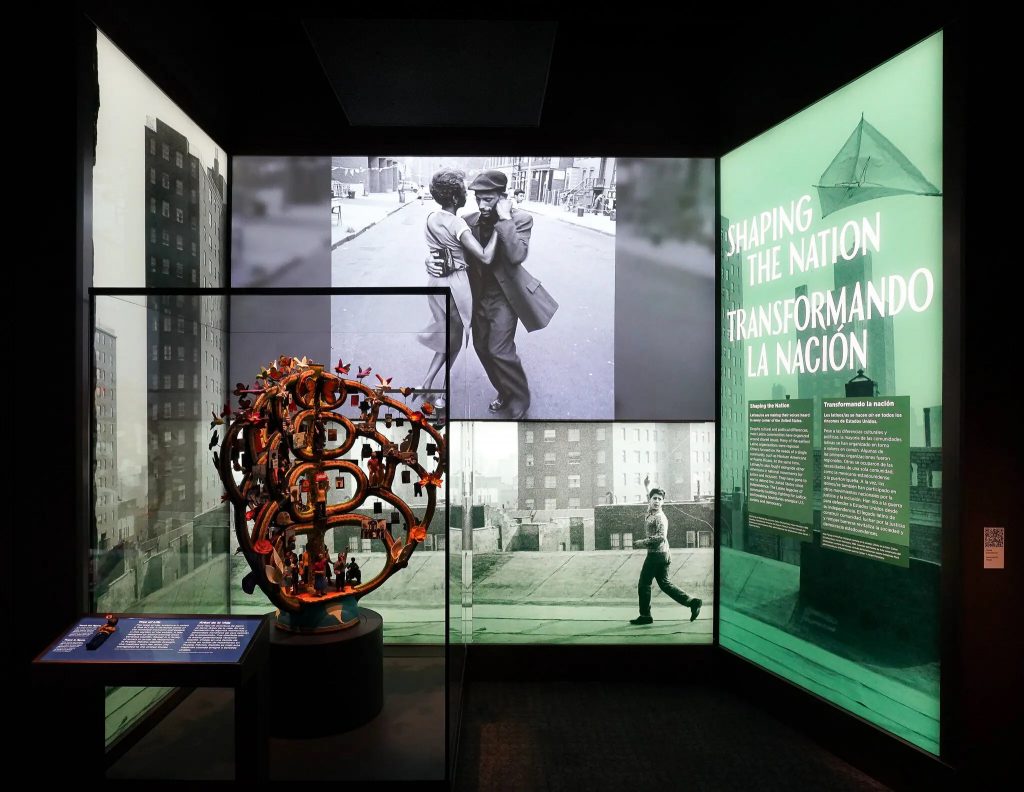
“¡Presente! A Latino History of the United States” at the Molina Family Latino Gallery at the Smithsonian Institution’s National Museum of American History in Washington, D.C. Photo by Tony Powell, courtesy of the Smithsonian Institution’s National Museum of American History, Washington, D.C.
Things came to a head this July, when the House Appropriations Committee passed a funding bill that eliminated government funding for both the Latino Museum and the Molina Gallery. Republican Representative Mario Diaz-Balart of Florida was outspoken in his disapproval of the museum’s perceived direction.
Two weeks later, the congressman and his allies met with National Museum of the American Latino founding director Jorge Zamanillo, hired in May 2022, and Smithsonian secretary Lonnie Bunch. Diaz-Balart agreed to drop his opposition to the museum’s funding now that “procedural changes in the review of content and leadership have been made,” according to a statement.
“Hispanics are not victims or traitors,” the statement added. “Instead, they are the backbone of our American society, and the Smithsonian leadership now understands that.”
The museum maintains that it has not made any procedural changes regarding exhibition content. The only change to “¡Presente!” was an edit to wall text about a raft used by Cuban refugees arriving in the U.S. in 1992. The original label did not mention Fidel Castro or the hardships suffered by Cubans under his regime, so the new one describes an “ongoing migration triggered by the 1959 Cuban Revolution led by Fidel Castro” and the effects of “Cuba’s dictatorship, political repression, and economic crisis.”
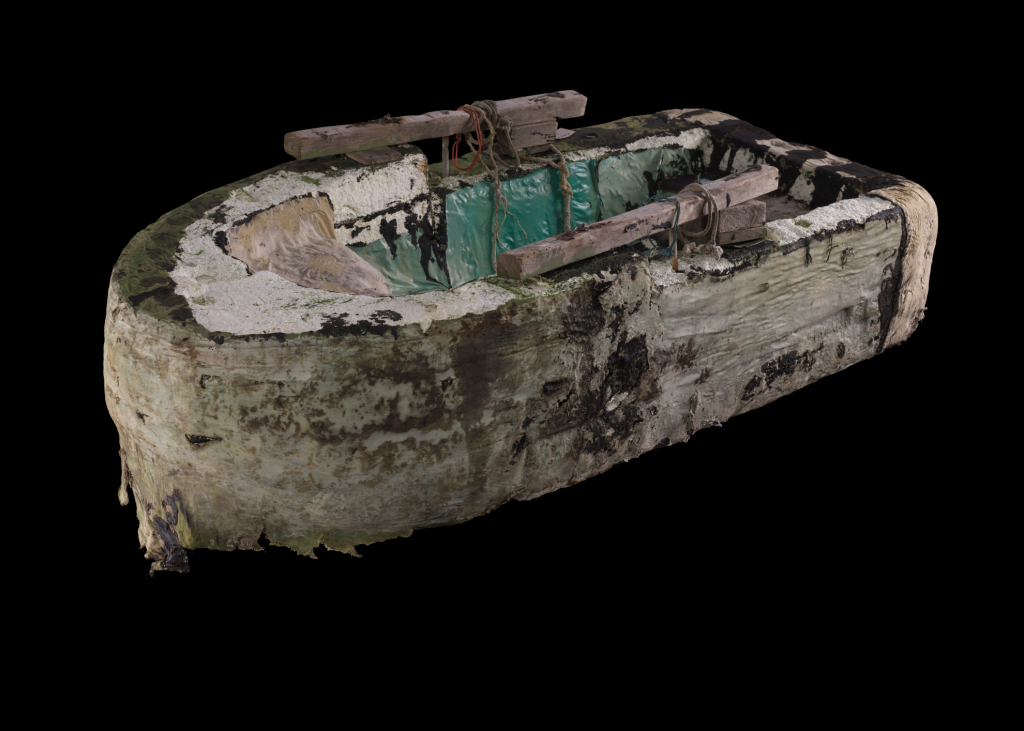
Raft used by Cuban balseros (ca. 1992). Photo courtesy of the National Museum of the American Latino, Washington, D.C.
“I think they were satisfied I was a new director, and we had made changes on the raft label,” Zamanillo, who previously headed the History Miami Museum, told the New York Times. “That was it.”
But the controversy surged anew in September, when Time magazine reported that the Molina gallery had shelved plans for a show on the Latino civil rights movement of the 1960s in favor of an exhibition about salsa music.
Scheduled to open in 2025 and tentatively titled “Latino Youth Movements,” the exhibition was set to have two guest curators, Johanna Fernandez, a professor at Baruch College, and Felipe Hinojosa, a professor at Baylor University. (Fernandez was previously on the curatorial team for a 2015 exhibition at the Bronx Museum about the Young Lords, a Puerto Rican activist group akin to the Black Panther Party.)
But even before the museum’s funding came under threat, Zamanillo appears to have been reevaluating the show and the general direction for future programming, reportedly in response to criticisms of “¡Presente!” from politicians.
If the Molina Gallery’s first show was controversial, how might conservatives respond to a show acknowledging Marxist thought and socialism—or, god forbid, Che Guevara? The museum’s conservative critics didn’t want to focus on how Latinos had faced discrimination. They wanted stories about the community’s successes, celebrations of their business acumen and military service.
Zamanillo put the civil rights show on hold in November, calling it a “a difficult but necessary decision” in an email to staff. (The planned materials are now potentially slated to be part of a different exhibition at the American History Museum in 2027, but not in the Molina Gallery. Fernandez and Hinojosa are no longer involved.)
“The museum director is ultimately the one who is responsible for the museum and its content,” David Coronado, a communications officer for the museum told Artnet News. “We often hear feedback from different stakeholders, including conservatives, moderates, and liberals, but the feedback does not influence exhibitions, content, or programming.”
“As custodians of Latino history and culture, we see our role as to preserve that history and culture and give it context so society can better understand why we should be celebrating the Latinos who helped shape the united statues and its national identity,” he added.
But with the Latino Museum’s future still unsecured—it will likely be 10 to 12 years before it opens—one might imagine that a show upsetting to conservatives would be risky, while salsa, on the other hand, has “a bigger reach,” Zamanillo told the Times.
In a Zoom meeting following the decision, Zamanillo explained that “‘a civil rights exhibition is not going to raise the kind of money we need to raise,’” Hinojosa told the Times. “It was all politics.”
The museum contests that characterization of events. “The exhibition timeline had been planned and discussed before the director joined the museum,” Coronado said. “The director wanted to have his own stamp on the next exhibition. He took a look at what was underway, and decided he would like to do a different show.”
